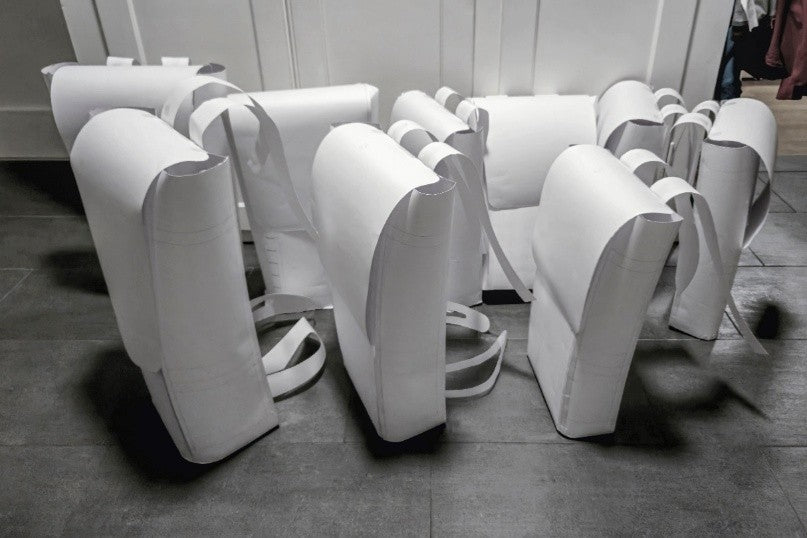You like to listen to podcasts?
Here we go! 🎙️⤵️

How we Design
Designed With Purpose, Shaped by Stories
The development of the Nola backpacks was guided by a clear objective: creating a high-performance, multi-functional product that meets the specific needs and preferences of a younger generation. The process involved continuous collaboration with stakeholders across various domains, including customers from urban adventurer to high mountain athletes, mountain guides, traditional craftsmen, and industry experts.
With Gen Z as the primary audience – younger than the founder and main designer and developer - it was essential to gain a deep understanding of this group’s behavior, preferences, and expectations. This was achieved through a combination of research methods: analysis of academic generational studies and psychological reports, as well as direct conversations with individuals aged 20 to 30. These discussions provided critical insight into functional expectations, aesthetic preferences, and usage patterns.
Early-stage prototypes, combined with the presentation of Nola’s brand values and product vision, were shared with this demographic. Feedback directly influenced design decisions. For instance, the integration of an insulated bladder compartment was informed by a common desire among Gen Z users to keep drinks cold. Further stakeholder discussions highlighted the need to protect hydration systems from sharp gear like crampons. The result was a multifunctional compartment compatible with both 3l hydration bladders and 14” laptops - suitable for a variety of scenarios from long travels to weekend trips.
To achieve an authentic vintage aesthetic, the team went a few steps further. Input from a retired mountain guide offered firsthand insight into traditional backpack designs. Additional research involved examining archival backpacks from the 1930s to 1950s, sourced from museums and private collections. This exploration helped developing the visual identity, material choices, and color palette of the final product, merging historic inspiration with modern utility. Prototype testing was carried out in real outdoor environments - hiking, climbing, and mountaineering - with the participation of students to experienced users including mountain guides and outdoor enthusiasts. Observations and feedback from these sessions led to targeted adjustments. One example includes repositioning the two main metal hooks to improve usability and accessibility and simultaneously enhanced the production efficiency. Key features, such as a collapsible shoulder-strap pocket capable of holding a 0.5l bottle, and accessible hip-belt compartments, were refined based on practical field use. These features were well-received across user groups.
In pursuit of a product with long-term value, the development team consulted with traditional craftsmen, including an upholsterer and a shoemaker, to explore techniques largely absent from contemporary backpack manufacturing. This led to the reintroduction of certain construction methods that, while more demanding in terms of precision, resulted in some parts in reduced material use, lower weight, improved reparability, and higher manufacturing quality.
The founder’s extensive experience in product repairs informed many of these decisions. Past responsibilities in repair process management brought a strong focus on repairability from the earliest design phases. This consideration ensures that the Nola backpacks are not only built for performance but also for longevity - supporting users in maintaining and extending the life of their gear.
The Nola backpacks are the result of a comprehensive and iterative design process, characterized by user involvement, field testing, historical research, and a commitment to responsible craftsmanship. The integration of feedback from diverse stakeholders - from Gen Z consumers to traditional artisans - enabled the development of a technically refined, aesthetically distinctive, and durable backpack that bridges generational values with contemporary function.
- Choosing a selection results in a full page refresh.
- Opens in a new window.
